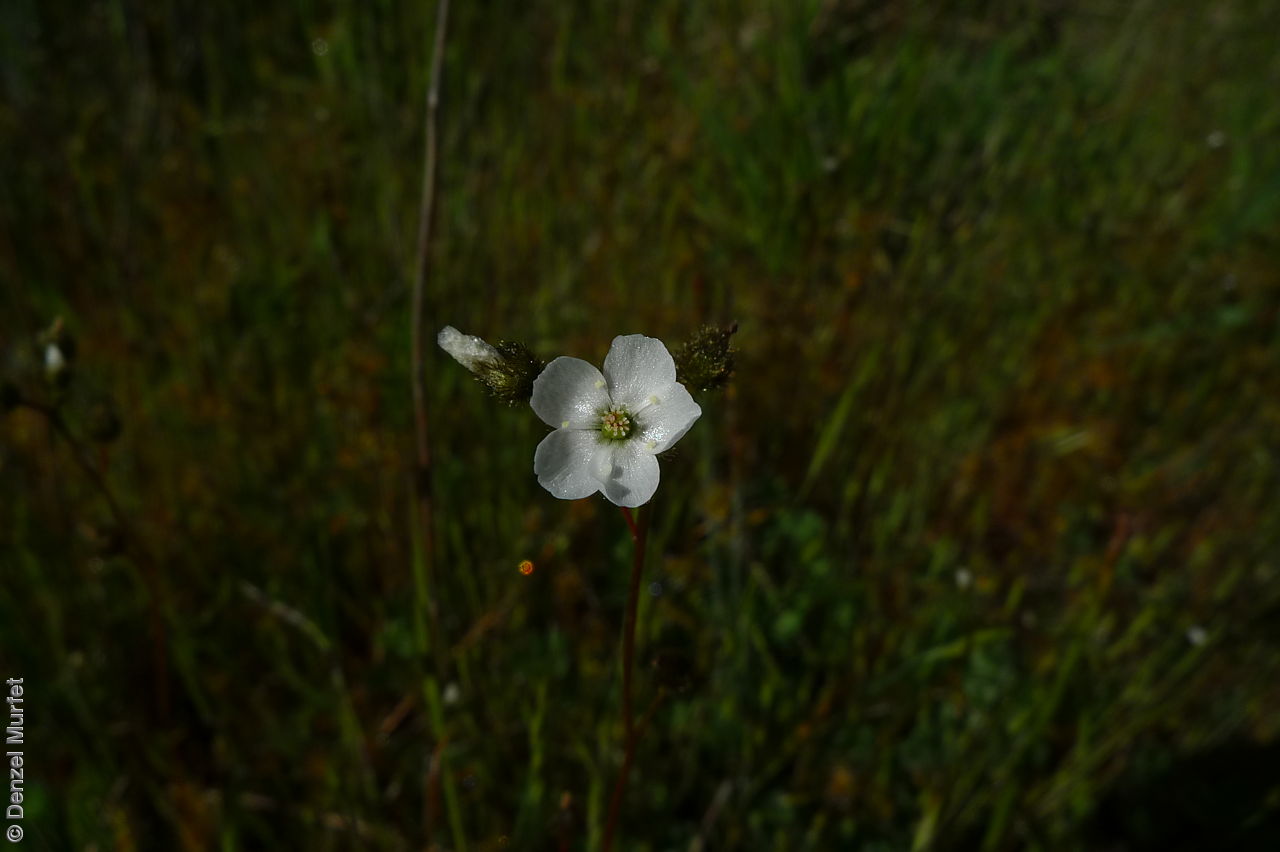












Botanical art
Prior names
Drosera gracilis
Common names
Swamp Sundew
Shield Sundew
Etymology
Drosera from the Greek 'droseros' meaning dewy, alluding to the glistening hairs of the glandular leaf laminae. Gracilis from Latin meaning slender.
Distribution and status
Found in a few locations on the Fleuriea Peninsula and lower South-east in South Australia, growing in seasonally wet and swampy areas. Also found in New South Wales, Victoria and Tasmania. Native. Uncommon in South Australia. Uncommon in New South Wales and Victoria. Common in Tasmania.
Herbarium regions: Southern Lofty, South Eastern, Green Adelaide
NRM regions: Adelaide and Mount Lofty Ranges, South East
AVH map: SA distribution map (external link)
Plant description
Erect perennial herb; rhizome erect, arising from a globose tuber. Leaves, stems and tubers red. Rosette leaves soil-appressed; leaves 3�5 mm in diameter, semi-orbicular-lunate. Inflorescence slender, solitary, unbranched, frequently leafless in the upper half; scape ending in a terminal raceme with 2�5-flowers. Sepals black, to 3.5 mm long, narrow elliptical, hairy. Petals pink or white, to 4.5 mm long, obovate. Flowering between August and November. Fruits are brown globose capsule to 5 mm diameter; erect, enclosed in persistent sepals.
Seed collection and propagation
Collect seeds between November and January. Collect mature capsules, those that are fat, hard, turning brown and contain black seeds inside. Place the capsules in a tray and leave to dry for one to two weeks. Then rub the capsules gently by hand to dislodge the seeds. Use a sieve to separate the unwanted material. Store the seeds with a desiccant such as dried silica beads or dry rice, in an air tight container in a cool and dry place.
| Location | No. of seeds (weight grams) | Number of plants | Date collected | Collection number Collection location | Date stored | % Viability | Storage temperature |
|---|---|---|---|---|---|---|---|
| BGA | 8,900 (0.38 g) | 50 | 23-Nov-2007 | RJB76190 South Eastern | 19-Sep-2008 | 100% | -18°C |
Number of plants: This is the number of plants from which the seeds were collected.
Collection location: The Herbarium of South Australia's region name.
% Viability: Percentage of filled healthy seeds determined by a cut test or x-ray.